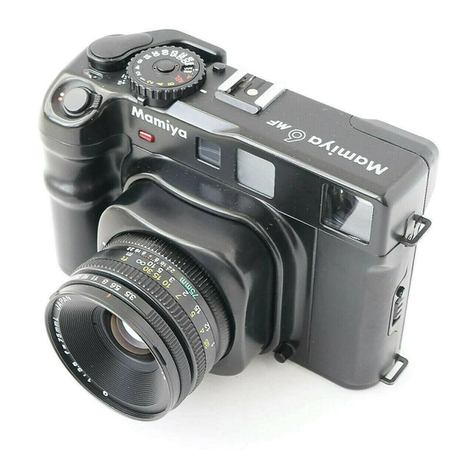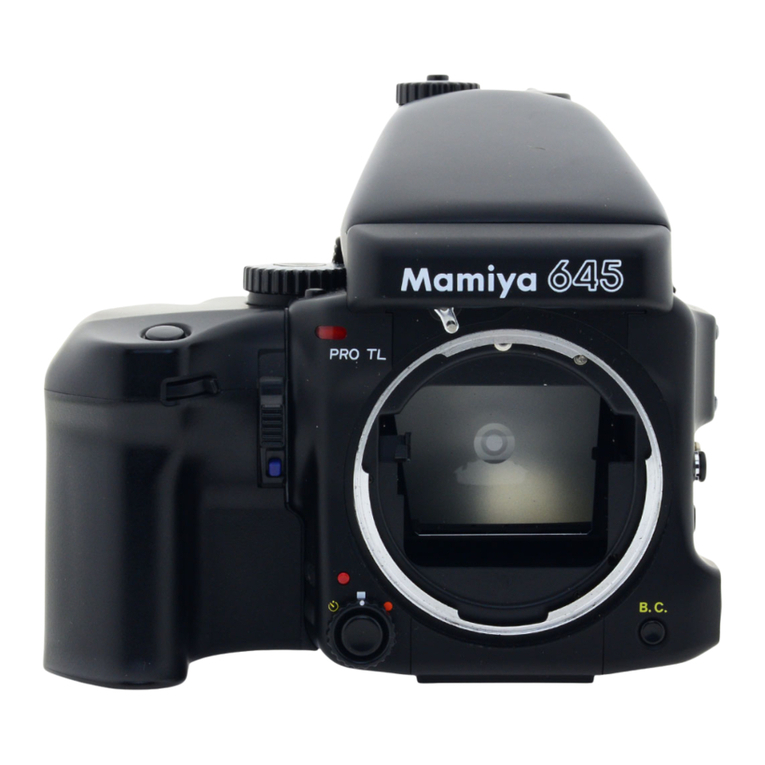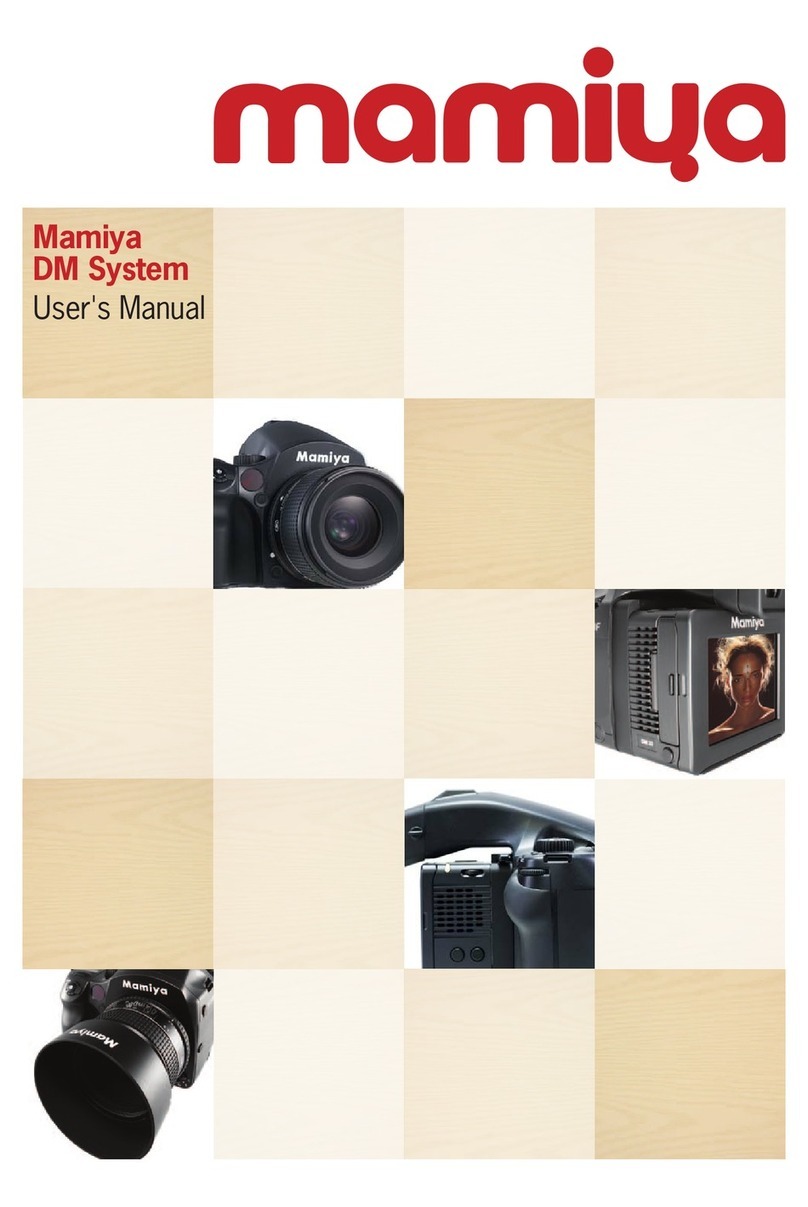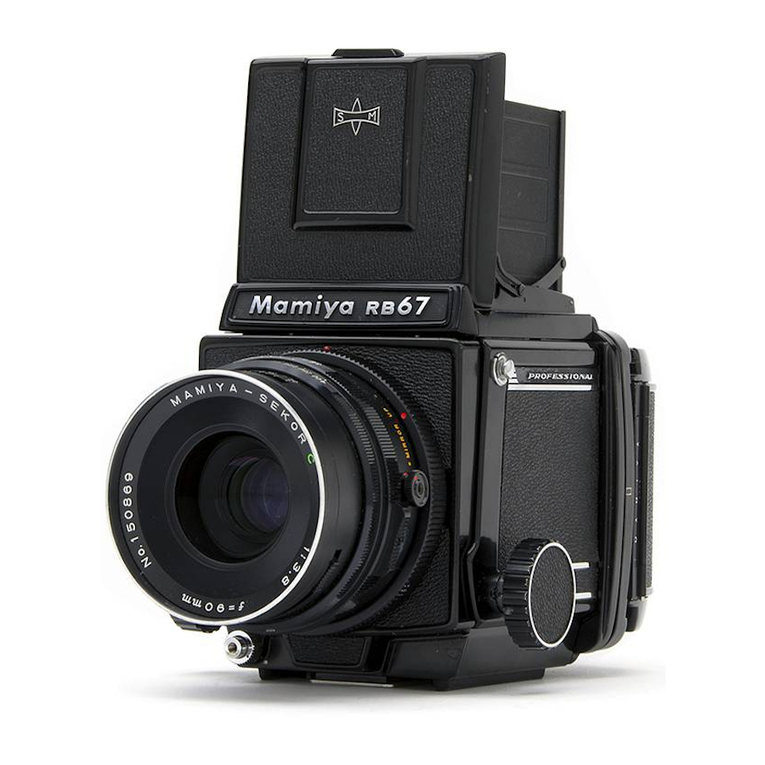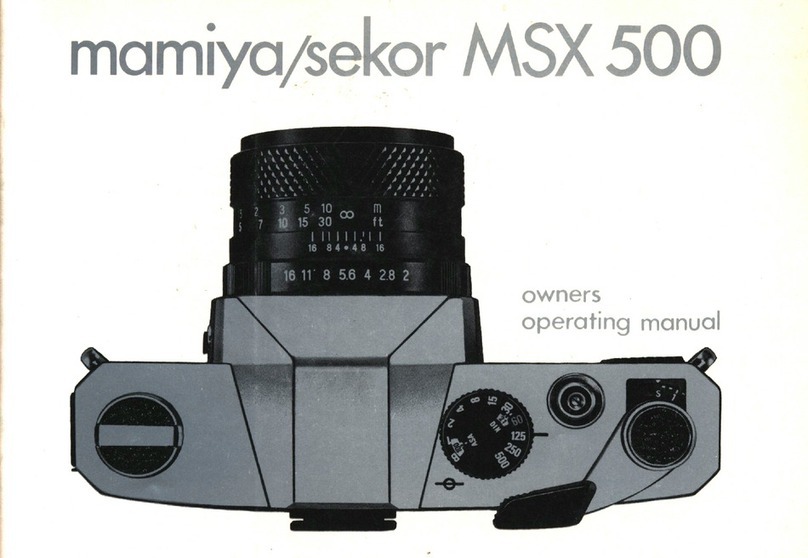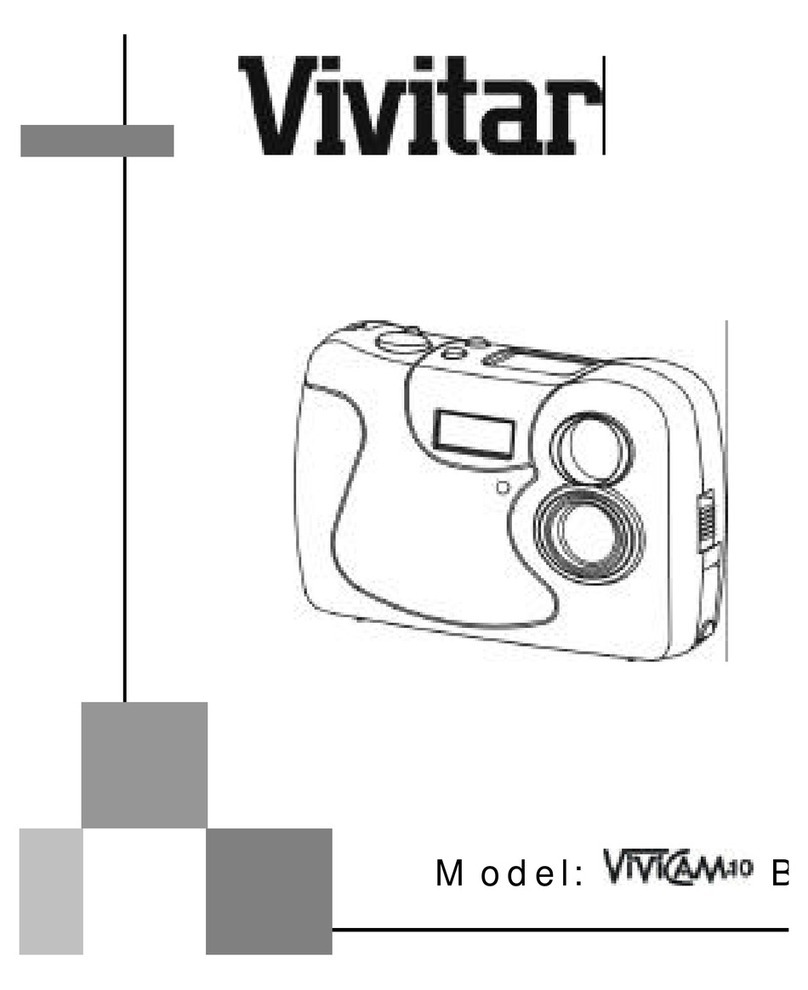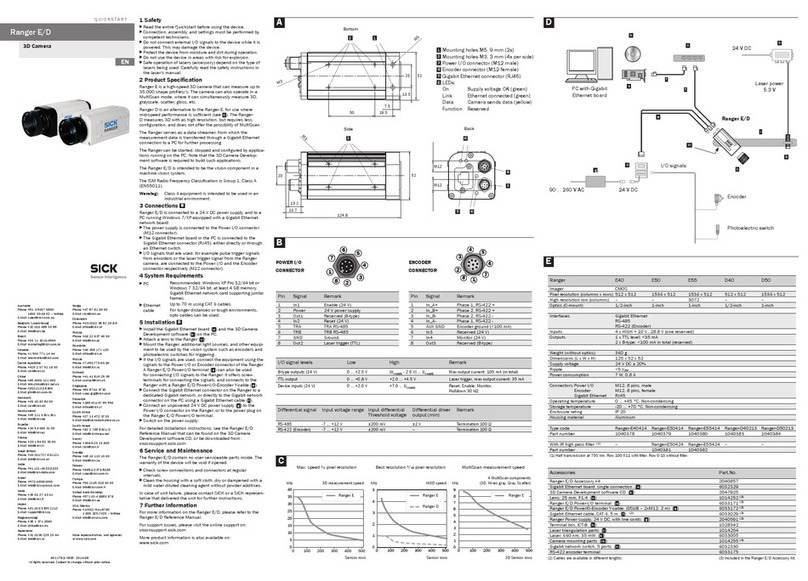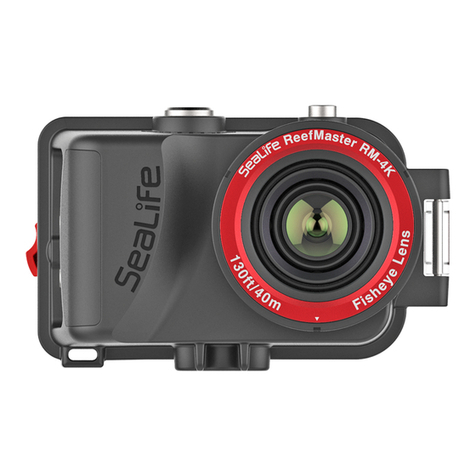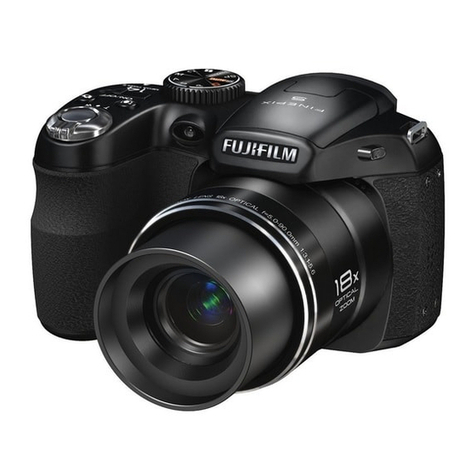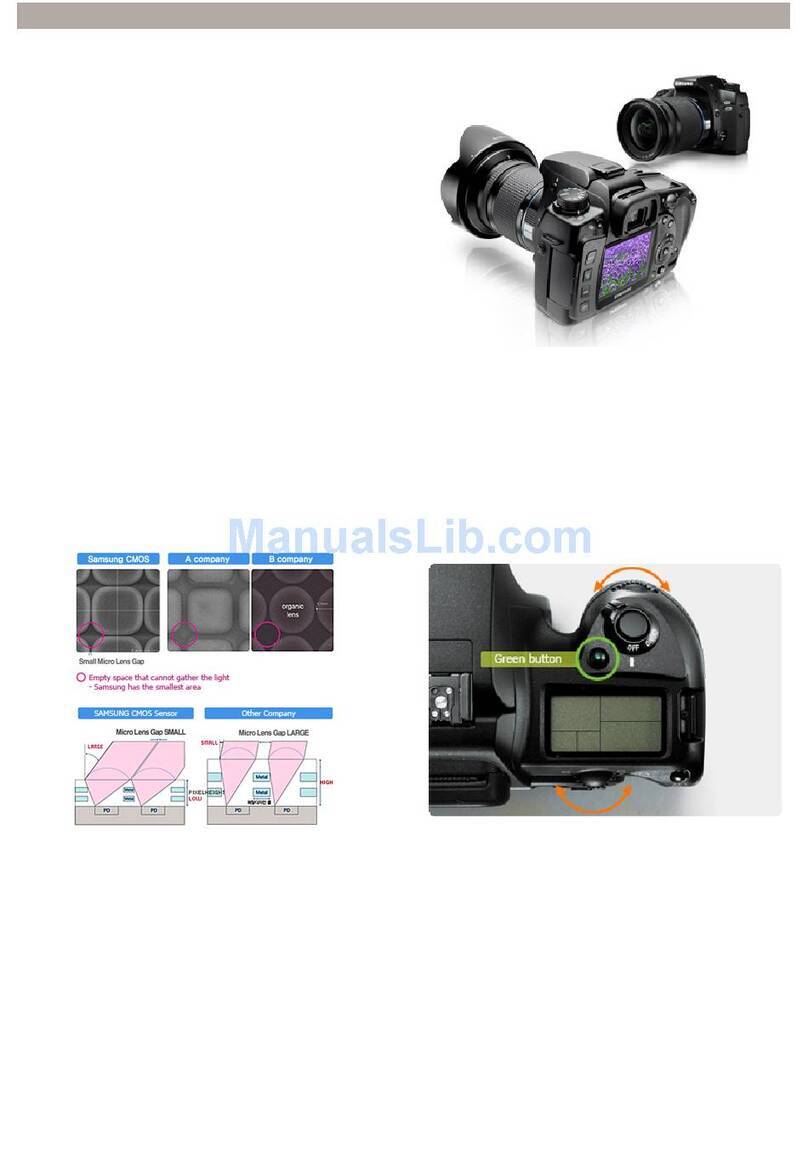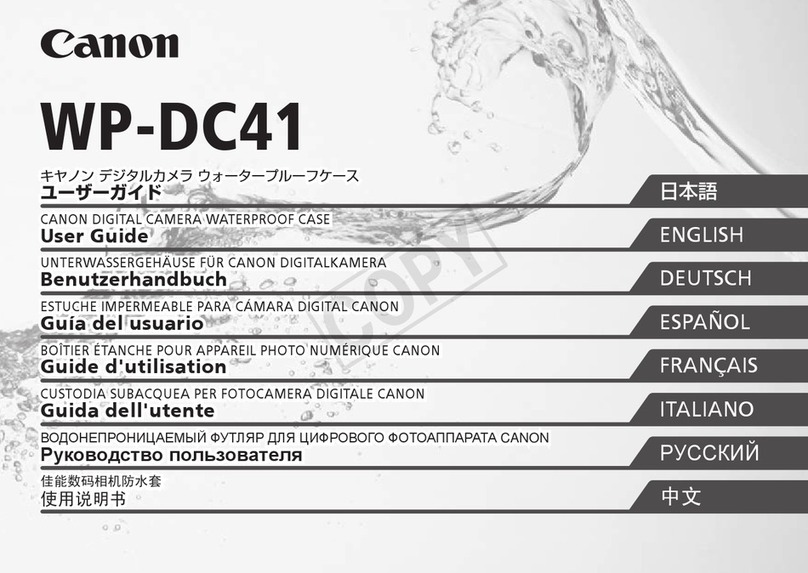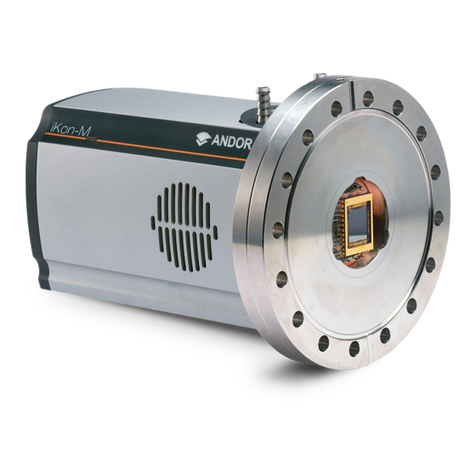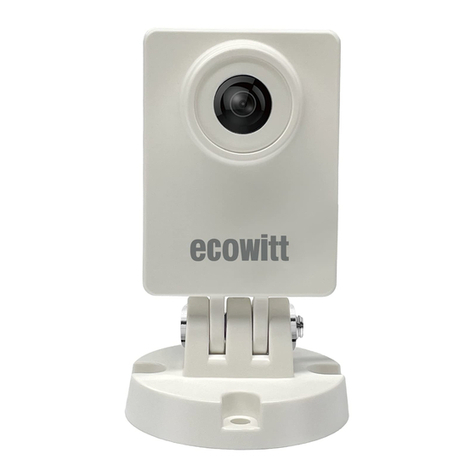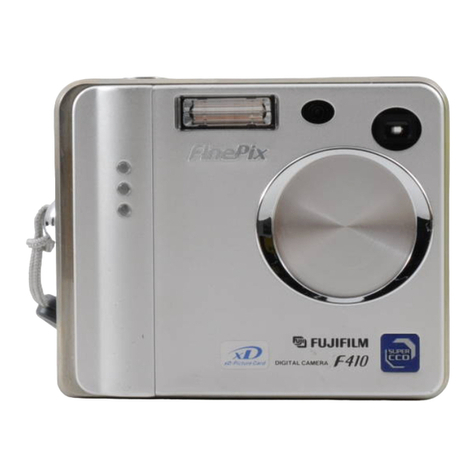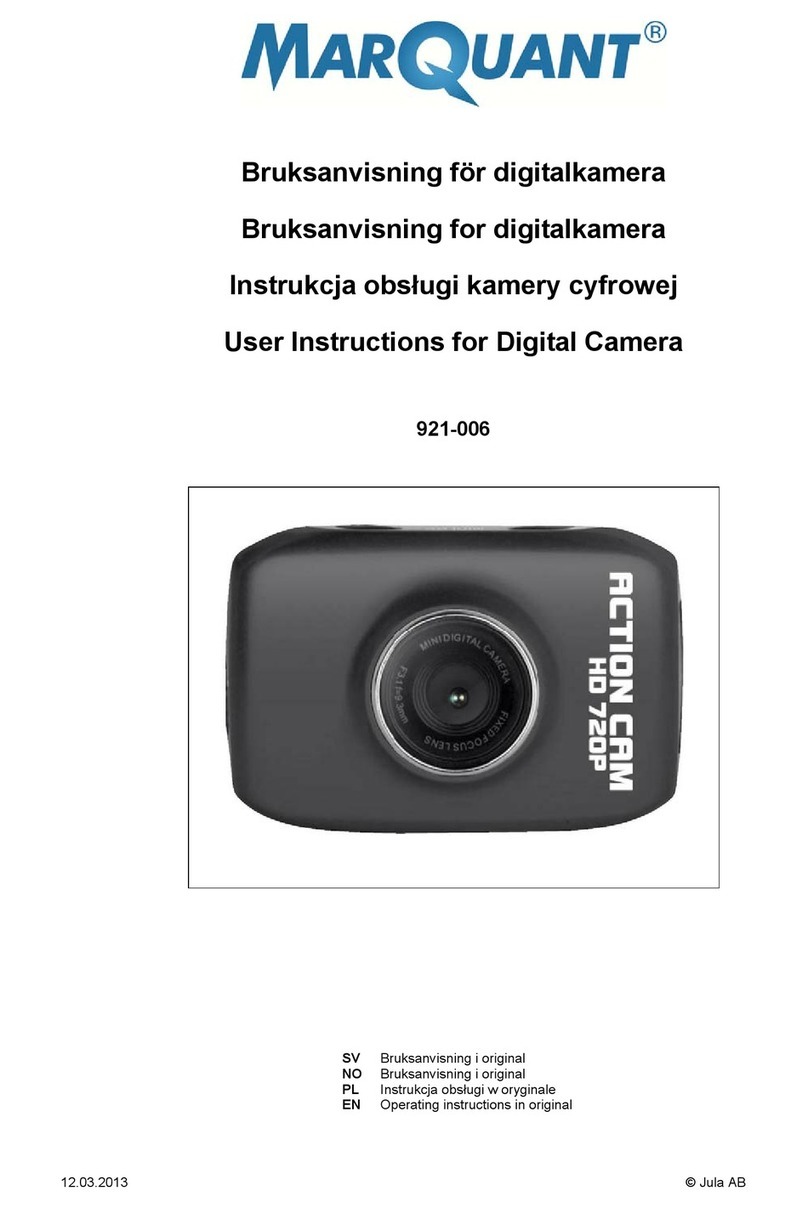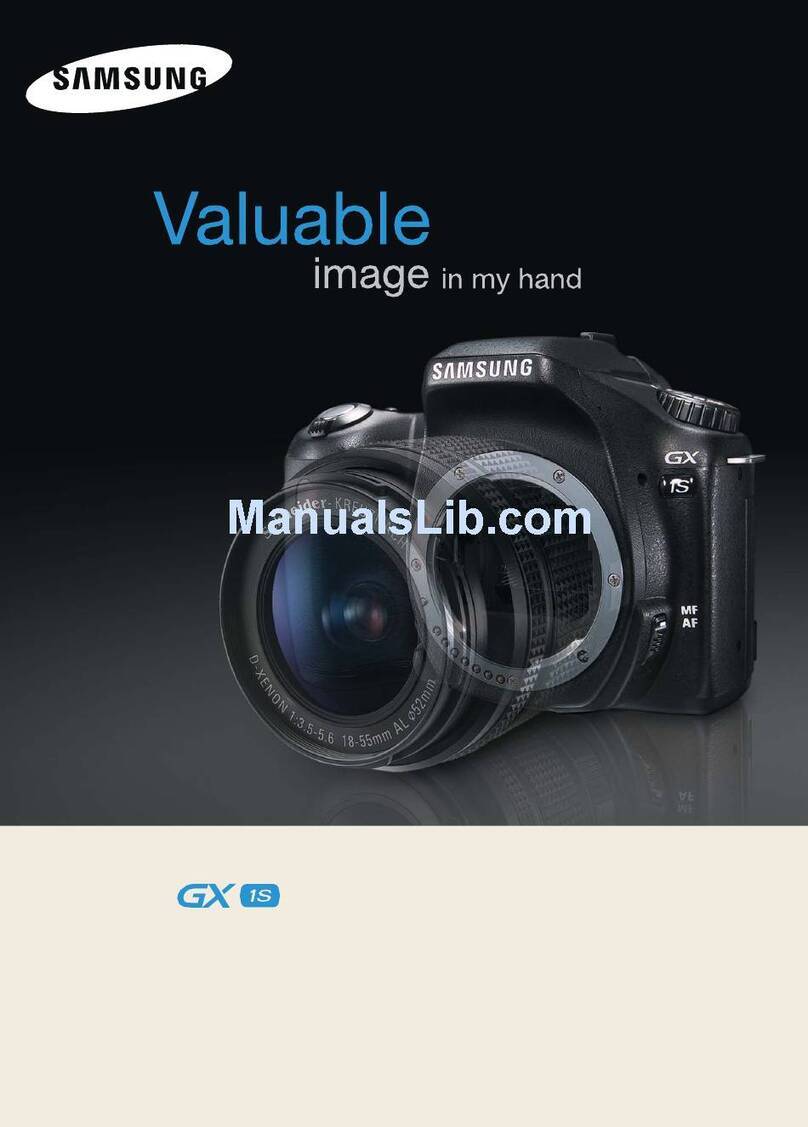Mamiya C33 Professional User manual

MAMIYA
C33
Professionol
0liltER'sMAltl|[t
www.orphancameras.com

NAME OF OPERATI'VGPO//NTs 1. Magnifying Glass
2. Focusing Hood Front
3. Frame Viewfinder (for
80mm lens)
4. Frame Viewfinder Mask
Studs (right and left)
5. Frame Viewfinder Flap
6. FocusingKnobs (right and
left)
7. Shutter Release
Button
8. Cable Release
Socket
9. Filmwind Crank
10.Multiple Exposure/Film-
stop Selector
11.Exposure Counter
12,Lens-Shutter Assembly
Catch
13.Lens-Shutter Assembly
Change Knob
www.orphancameras.com

14.Parallax Correction Lever
15.Filmspeed (ASA) Dial
16.Shutter Cocking Lever
(body assembly)
L7.Shutter Cocking Lever
(lens-shutterassembly)
18.Synchroflash Terminal
(lens-shutterassembly)
19.Synchroflash
M-X Selector
(lens-shutter
assembly)
20.Distance Scale (right)
2L.Distance
Scale(left)
22.DistanceScale
(left)
23.Strap Eyelets (right and
left)
AccessoryClip
Focusing
Hood
Lock Screw
Backlid Catch Button
27. Red Window Cover
28.Film Chamber
29.Film Spool Catch Stud
30.Take-Up SpoolChamber
31. Take-LIp
Spool
Catch
Stud
32.Start
Marks (right
and
left)
33.Backlid Hinge Release
34.Tripod Socket
24.
25.
26.
2
www.orphancameras.com

FOCUSING
HOOD OPERATION
1. The focusinghood will snap erect when the fobusinghood front @ is lifterl up from the
rear. (Fig. l)
2. Slight pressure on the upper section of the viewfinder flap @ will release the magnifying
glass @ which will spring into proper position over the ground gtass viewing and focusing
screen.
(Fig.2)
3. When the frame viewfinder flap @ is pusheddown fully it will catch andremain overthe
ground glass' This permits eye level viewfinding for the 80mm lens. When frame view-
finder @ is pushed
down until it catchesthe direct view covers the area of the 65mm
lens. (Fig. 3)
4. To release the frame viewfinder @ and flap @ for returning to original position, first push
in the left side plate (as seen from the rear) of focusing hood then push in the right side
www.orphancameras.com

5.
plate. (Fig. 4)
To collapse and fold the focusing hood, first see that the frame
then fold down the magnifying glass O. Fold down the side
momentarily while folding back the focusing hood front @.
FOCUStNc
1. The method of focusing is the same as for any twin-lens reflex
the focusing knobs @ while keeping the image of your subject
glass screen.
2. when using the frame viewfinder with lOs
mm, l3s mm
camera, be sure to attach proper auxiliary mask to the
camera. Turn either of
centered on the ground
or 180
mm lenses mounted on the
mask studs @.
viewfinder flap
plates and the @ is closed,
back; hold
IENS CHANGING
1. Before removing or fitting a lens-shutter assembly turn focusing
knob @ to make certain that the lens mount is fully retracted into
the camera body.
2. Turn the filmwind crank cottnter clockwise ancl reset in bocly
housing position. (Fig. 5)
3. Turn lens-shutter assernblychange knob @ to,.uNI-ocK". (Fig.6)
4. Press down knurled head of the lens-shutter assembly catch @,
4
www.orphancameras.com

and allow it to swingout forward. The lens-shutter
assemblycanthen belifted out. (Fig.7)
5' To attach a lens-shutter
assembly,lower carefully into position on the lens mount, then
securein place
by replacing the lens-shutter assemblycatch @, turn the lens-shutter assembly
change
knob @ to "LOCK".
CAuIloN: Shutter cocking lever @ cannot be meshed
with the shutter cocking lever @
in lens-shutterassemblyunless the filmwind crank is returned to its original position.
Mount and secure the lens when these two levers are properly meshed. (FiS. 8)
6. A red warning signal visible under the ground glass screen indicates that the lens-shutter
assembly change knob @ is at "UNLOCK" position; shutter becomesinoperative and filnr
is automaticallyprotectedfrom light.
7. After lens changingis completed,
adjust the parallax correction lever to the index figure
given on the lens mount. However,when the 65mm lens is mounted,set thelever. at 80
andattachthe accessory
parallaxcorrectionplate (packed
with the lens)
to the hood. (Fig. g)
www.orphancameras.com

FIIM TOADING
1. To open backlid, first turn backlid catch button @ so that the red dot is
then push to the right, in the direction indicated by the arrow mark (Fig.
will be released, and the exposure counter @ will be reset at .,O,,.
2' Loading and unloading film is done in the same
way as
with othertwin-lens
reflexcameras.
However, before loading always make certain that the multiple exposure/filmstop selector
@ is turned to "ROLLFILM". In this position,you are assured that the shutter button
@ cannot be operated
for release
of shutter unlessthe film hasbeen wound and advanced
one frame. (Fig. 11)
3' After the film has been positioned over the film gate, and the end has been secured to
the take'up spool,
turn the filmwind crank @, winding until the start mark (double-headed
aligned vertically,
10). The backlid
6
www.orphancameras.com

arrow) printed on the paper backing of the film comes into alignment
with the start marks @ near the upper side of the film gate (Fig. 12).
Close backlid, and lock by turning the backlid catch button down
toward the left.
CAUTION
: When closing the back, always press the right side of
the catch button tightly so that both right and left sides of the
back are securely engaged to the body. (Fig. 13)
4. Turn filmwind crank @ in clockwise direction untit it stops. The
first frame of film will be in correct position for exposure,
while the exposure
counter @
will indicate numeral 1.
Shutter will be cocked by one stroke of the filmwind crank. After
filmwind crank must be turned in counterclockwise direction until
not operate unless the crank is returned to its original position;
never force the shutter release. (Fig. L4)
5. Repeat the above step after each operation of the shutter.
When twelve frames have been exposed, continue advancing the
film until the film is completely wound on the take-up spool.
Remove film.
On the right-hand take-up spool holder
which moves when the crank is turned.
advancing the film the
it stops. Shutter will
there is a yellow mark
This mark is provided for
7
www.orphancameras.com

your convenience: align the yellow mark with the white mark on the camera bodv for
easy removal of fiIm. (Fig. 15)
6. Red window cover
@ canbeslid down to ascertain
whetheror not the camera containsfilm.
GAUIION:
When the multiple exposure/filmstop
selector@ is set at 'TROLL
FILM", the shutter button
@ is operable
once only for each numeral, from 1 to 12,appearing
in the exposure counter
@. This automatic locking of the shutler button for prevention of multiple exposure does
not occur when camera is empty.
When there is no film in the camera,crank operation will not advance
exposure
counter @.
Consequently,
the shutter button cannot
beoperated
even
with the shutter cockedand multiple
exposure
button @ turned to "ROLL FILM". However,if the take-up spoolremains
in, the
sameeffect as film loading may result, clepqnding
on the type of spool. In such case it is
not desirable
to operatethe crank. Avoid doing so if possible.
TO TAKE IAULTIPLE
EXPOSURES
First bring the red mark on the multiple exposure/filmstop selector @
to SHEET or Multi-exp. Shtrtter can be cocked by pushing down
the shutter cocking lever @ of the lens-shutter assembly (Fig. 16).
The procedures will be the same when the single-exposure attachment
is employed.
8
www.orphancameras.com

CHANGING FOCUSING
HOOD
1. The focusing hood can be easily removed by loosening the lock
screw @ and lifting up the rear end of the assembly.
2. To mount, match the groove on the front side of the hood to the
two pins on the body; match the rear groove to the lock screw @
and tighten. (Fig. LT)
PICTUR,ETAKING
With this camera, ?r exposure index and
ground glass. The indicator needle starts
while the focusing knob is being operated.
index and parallax. In this instance, the
index shown on the lens being used.
a parallax correction scale are provided on the
to appear in the upper part of the ground glass
Position of this indicator needle shows the exposure
parallax correction lever @ must be set at the
EXPOSURE
INDEX SCALE
As the distance
between
the lens and film becomes
greater, the light value will be lower
providedthe aperture is constant. In this case,
the exposuremust beincreased. I;irst, take
a light meter reading to obtain the exposureand make the correction basedon the exposure
index given by the camera.
www.orphancameras.com

x
r.5
2
2.5
3oFigures given on the left side of the ground glass show exposure
index. If the reading of the scale is 2 with object in focus, this
indicates the necessity of doubling the exposure. For example,
if the exposure meter calls for F'8 at 1/60 sec., it is necessary to
adjust to 1160
at F5.6 or 1/30 sec. at F'8.
PARALTAX CORRECTION
SCALE
When taking pictures with the camera held in hand, the portion
Adjust the camera
seen above the indicator needle on the ground glass is cut off on the film.
so that the subject will come under the needle.
When a tripod or stand is used,the interpositioning of the PARAMENDER (parallax com-
pensation
mount) will permit you to sight and focus without any par:allax
whatsoever.
PRECAUTIONS
When the 65
mm lens is to be used, mount the accessory parallax
correction plate on the hood. Remove the hood and place it with
the front side to the back. The correction plate must be turned over
also. Attach the plate to the hood by means of two plate catches
and slide lock. In this instance, insert the edge of the plate with
chamfer into the plate catches. (Fig. 18)
Figures on the left side of the correction plate show the exposure
/to
www.orphancameras.com

index; lines on the right side are for parallax. If the indicator needle points to 1.5, the
sectionof picture above
the top line will be cut off. When the scalereading is 2, the section
of picture abovethe second
line from the top will be cut off. In this way, this scale can
be usedfor 2.5and 3 as correction scale. Parallax correction lever @, in this case, is set
for 80mm lens.
DISTANCE SCATE AND DEPTH OF FIETD
1. When the exact distancefrom the camera to the subject must bedetermined,take a look
at the distance
scale. Hold the camera in shooting position;the scale
@ on the right side
is for 80mm and 65mm lensesand the distanceis shown on the scale by the indicator
needle. On the scale@ on the left side,the value is read in the intersecting points of
curvesrepresenting
the interchangeable
lensesandthe scale
figures on the sideof the body.
However, the reading for 135
mrn lens is sepa-
rately provided rrnder this scale and it can be
directly read on the distance scale @. (Fig. 191
2. When it is necessary to check the available
depth of field, obtain the distance to the subject
either by referring to the distance scale or by
actual measurement, then make use of the depth
of field table.
tl I
I
I
www.orphancameras.com

1.
SINGLEEXPOSURE
PHOTOGRAPHY
Turn multiple exposure/filmstop selector @ to "SHEET or Multi-
exp". At this position the shutter button can be operated at will,
regardless of the filmwind crank and exposure counter.
Remove backlid by pushing inward the backlid hinge release @,
lock pivots by turning up into the slots, and finally unlock and
releasebacklid catch. The backlid will come off completely. (Fig. 20)
Remove the spool from inside the camera, then attach the special
single-exposure back, reversing the removal procedure. Slide plate
or cut film holder, loaded, into the grooves of the single-exposure
back (Fig. 2r), and secure by means of the catch (Fig. 22). You
are now ready for single picture photography.
SYNCHROFLASH
PHOTOGRAPHY
1. By attaching a flashgun or electronic flash unit to the accessory
clip and connecting up with the synchroflash terminal @, you have
a handy set-up for synchroflash photography. It is convenient to
make use of eye-level sighting by .means of the frame finder, or
2
3.
r2
www.orphancameras.com

the PORROFLEX.
2- Set the synchroflash M-X selector @ for the type of flash used. This acljustment may be
done after the shutter has been cocked.
3. Position "M" gives the correct delayed shutter action for class M llashbulbs (about 20
milliseconds to peak), permitting accurate synchronization at all shutterspeeds including
1i500 second.
4. Position "X" gives no time lag, and is used in conjunction with electronic flash (xenon
strobo) for all shutterspeeds, or with ordinary flashbulbs at shutterspeeds not exceeding
l/30 second.
5. When not using synchroflash, keep selector @ at position ,,X,,.
TABTEOF FTASH SYNCHRONIZATION
O...will synchronize X...will not svnchronize
t3
Conloct --r-!hutter Speed
rro,r,ii-iu-€c'l Btl2 rlt 118 t/15 I
/30 I
l60 I
lr2s Il2so r
/s00
MM closs a) a) -a) a)
x
Electronic Flosh ^ta) oo^
F closs a) a) r) r) a'l XXX
M closs ooooa) X X X X
www.orphancameras.com

INTERCI{ANGEABIE
LENS.SHUTTER
ASSEMBLIES
(MAMIYA-SEKOR lens with SEIKOSHA-S shutter)
WIDE-ANGIE (F3.5, f :65mm, 63-degree picture angle)
A 6-element, S-group, fully corrected anastigmat with retrofocus arrangement, this lens is
unsurpassed for brilliance, sharpness and color fidelity. Wide-angle in conjunction with large
negative size gives extreme versatility in press and candid photography. Outstandingly suitable
for close range work such as copying because lens-to-subject distance can be as close as
4 inches.
When a wide angle lens is used on this camera, it is not necessary to employ a viewlinder
auxiliary mask with concave lens.
sHoRT FoGAt LENGTH
(i?2.8,
f :80mm, 50"40' picture angle)
A general-purpose anastigmat of 5 elements in 3 groups, this lens permits close-range photo-
graphy down to approximately 7 inches between lens and subject. It is therefore convenient
for document copying and high magnification work.
IONG FOCATTENGTH
(F3.5, f :105mm, 41-degreepicture angle)
All-purpose 4-element, 3-group; this lens is used for portraiture and general landscapes, serving
both amateur and commercial photography.
toNc FOCAL LENGTH
(F4.5, f :135mm, 33-degree picture angle)
Ingeniously designed 4-element, 3-group, fully corrected anastigmat, this lens gives reproduc-
tions of extreme naturalness and depth, which cannot be obtained with conventional twin-lens
t4
www.orphancameras.com

reflex cameras using lenses of. 75mm focal length or thereabouts. This fully corrected
anastigmat is eminently suitable for portraiture, commercial art photography, and scientific
and industrial documentation.
TELEPHOTO
(F4.5, f :180mm, 24'30' picture angle)
A 4-element, 3-group, fully corrected, this unique lens, because of
construction, does not differ much in physical length from the 135
is particularly suitable for stage action photography, portraiture, and
where the subject cannot be easily approached.
The conventional 180
mm lens for the Model C cannot be mounted
180mm lens for Model C33.
its telephoto design and
millimeter assembly, and
candid shots in situations
on this camera; use the
Type of Lens
65
mm
80mm
105
mm
Minimum Disionce from
Film fo Subiect SubiectCoveroge
Minimum
Distonce
2)("
x2yrr
I0Ytao
TI L%O
Lt r0yr6n
2t 87ra"
CTOSE-RANGE
PHOTOGRAPHY TABTE
3%"x3%"
7/ru'tx7/u'l
9't xgtl
9)11x9ft'l
3t 10y16'l
www.orphancameras.com

SPECIAL
ACCESSORIES
LENS HOODS Four typesare available
for 65
mm
GAUTION
:
for 80
rnm and 105
mm for 135
mm
1. When attachingthe hoods for the 135mm and 180mm lenses,the securing screw side
should be fitted to the picture-taking (not viewfinding) lens. Otherwise the dividing partition
will obstruct picture-taking.
2. Mount the hood for wide angle lens on the lower lens of the cameraby moving side plate
facing the viewing lens. During the focusing operation, reflection from the upper side
plate sometimes enters the viewing lens, depending on the direction of light, affecting the
image reflected on the focusing glass. When this happens,incline the upper side plate to
prevent the reflection from entering the upper lens.
t6
for 180mm
www.orphancameras.com

FIITERS (byTOSHIBA)
Filters of various types are availablein three slzes:
40.5mm diameter screw-intype for the 80mm and 105mm lenses
46mm diameter screw-in type for the 135mm lens
49mm diameter screw-intype for the 65mm and l80mm lenses
Y2, YG, 02 color filters, UV ultraviolet filter, and SUNLITE filter for color film are available.
Note: When attaching filter to the 180mm or 65mm lens, the
guard ring at front extremity of the barrel must first be removed
by. applying the palm and turning counter clockwise. Always
replace guard ring when filter is removed. Be sure to specify
filter for Model C.
PARAMENDER (Parallax Correction Mount)
An accessory interposed between the camera and tripod or other
mount, the PARAMENDER permits the lowering of the viewfinding
lens down to level of picture-taking lens for parallax-free viewing
during focusing and composing. Before releasing the shutter,
raise the camera until it stops. The picture-taking lens comes
into the position of the viewfinding lens and parallax is thus
completely eliminated.
l7
www.orphancameras.com

S!NGLE-EXPOSURE
ATTACHMENT
By using the single-exposure back in place of the standard backlid,
the special plate and cut film holders permit the taking of single-
frame negative pictures which are so useful in professional and
advanced amateur work. Immediate checking of results is possible.
PORROFTEX
This reflex mirror attachnr.ent perrnits eye-level viewing ancl
focusing by means of an image in correct orientation. Fittecl in
the same way as the focusing hood, this viewer is indispensable
for candid and press photography.
To mount, remove the hood from the camera, mount the Porroflex
in its place and tighten the hood lock screw @.
GRIP I{OLDER
Special grip-form handle is particularly handy for steady holding
of camera during picture-taking. It also provides a mount for the
flash unit.
SPECIALLEATHER
GADGET BAG
For camera, interchangeable lenses and accessories.
r8 9A50
www.orphancameras.com
Other manuals for C33 Professional
1
Table of contents
Other Mamiya Digital Camera manuals

Mamiya
Mamiya 645 AF User manual
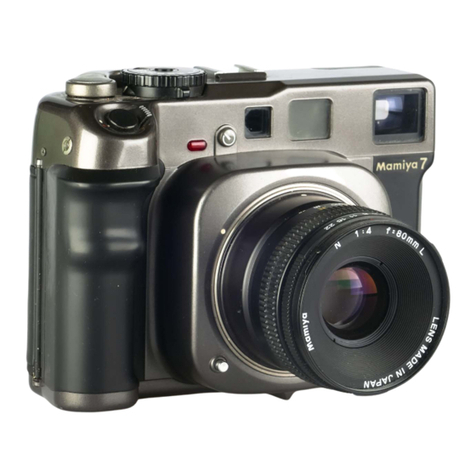
Mamiya
Mamiya 7 User manual
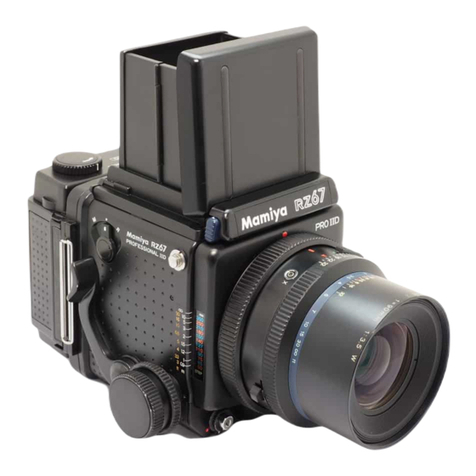
Mamiya
Mamiya RZ67 User manual
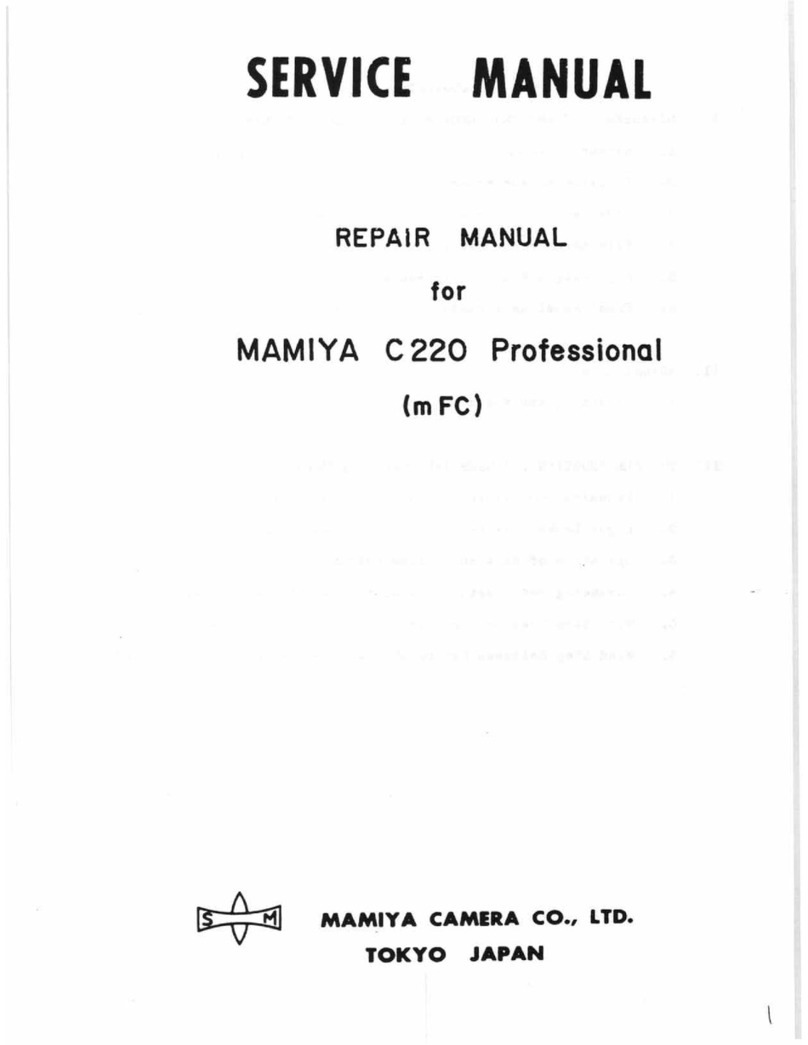
Mamiya
Mamiya C220 Professional User manual
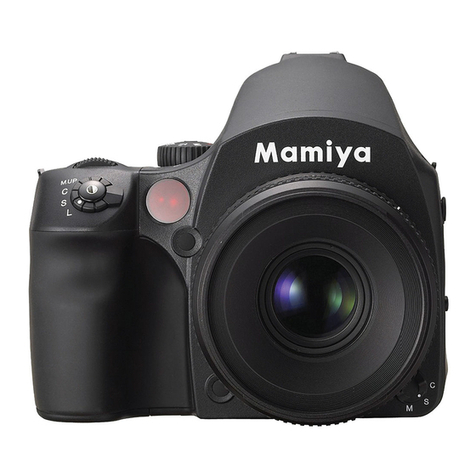
Mamiya
Mamiya 645DF User manual

Mamiya
Mamiya M645 Super User manual
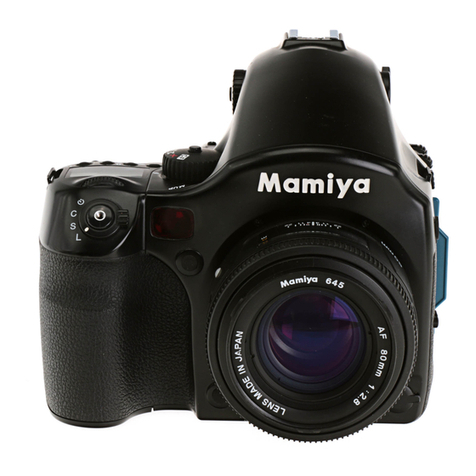
Mamiya
Mamiya 645 AFD II User manual

Mamiya
Mamiya RB67 Pro-S User manual
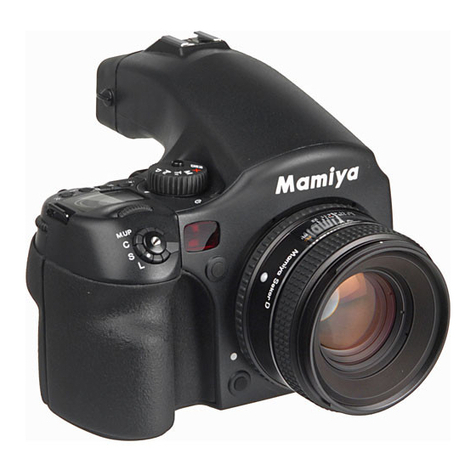
Mamiya
Mamiya 645 AFD III User manual

Mamiya
Mamiya M645 Super User manual
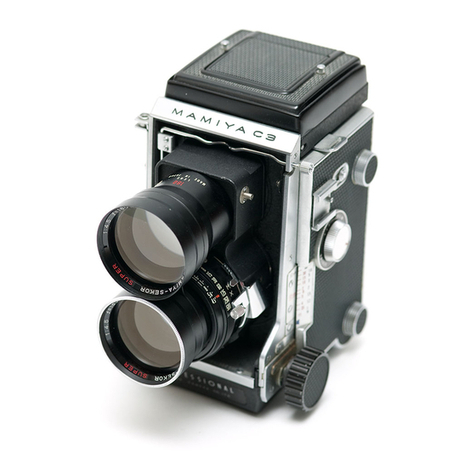
Mamiya
Mamiya C3 User manual
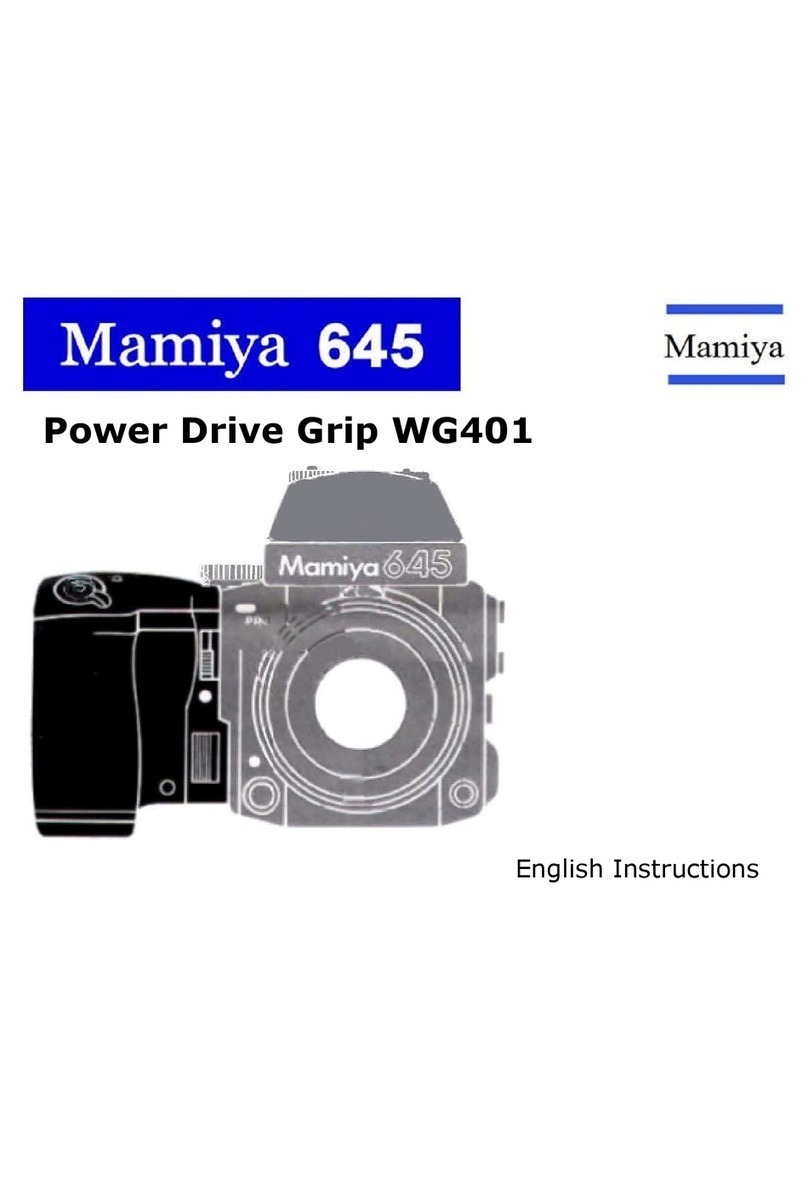
Mamiya
Mamiya 645 User manual
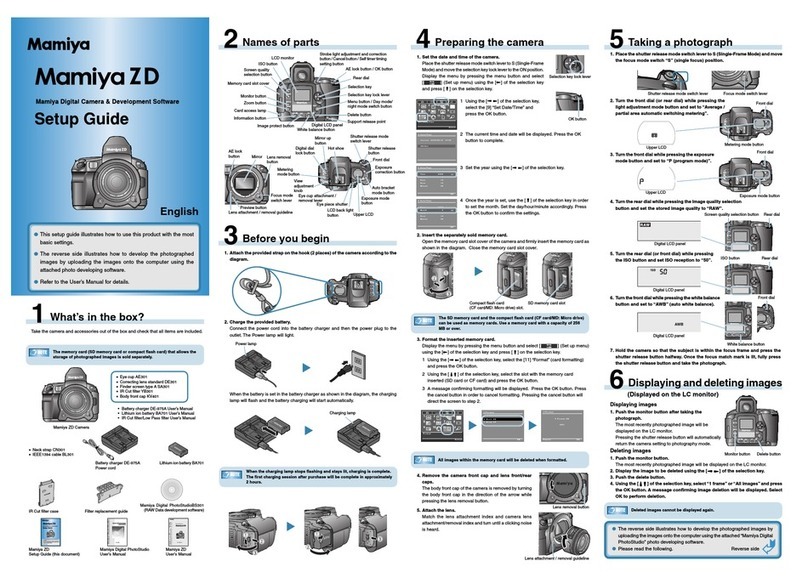
Mamiya
Mamiya ZD User manual

Mamiya
Mamiya ZD User manual
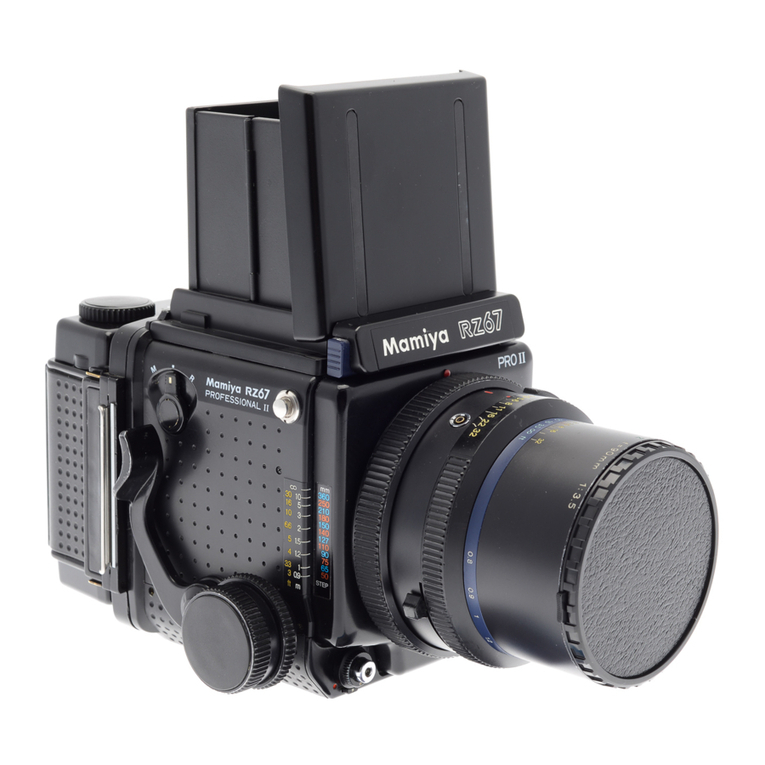
Mamiya
Mamiya RZ67 PRO II User manual

Mamiya
Mamiya 645 AF User manual
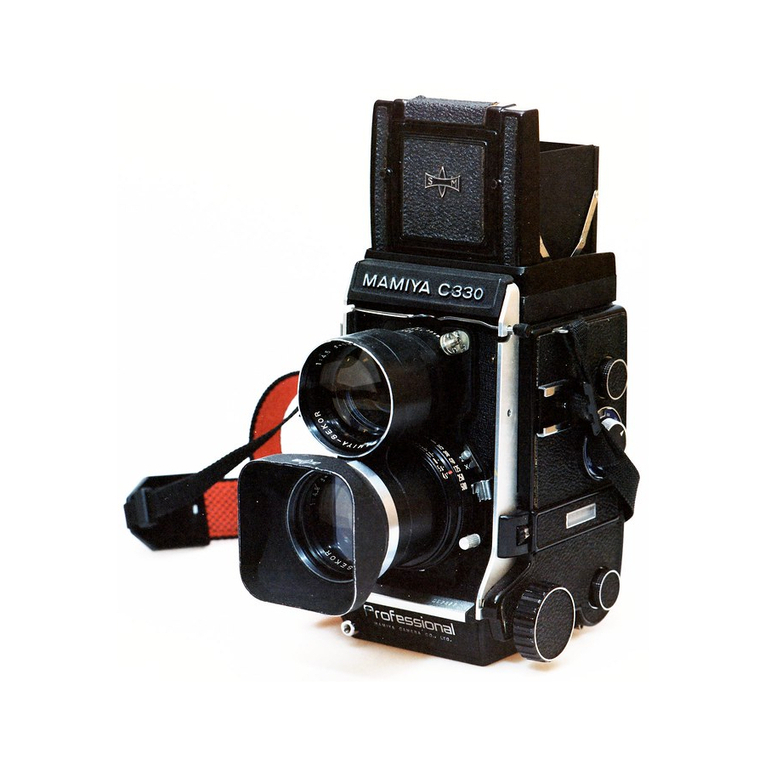
Mamiya
Mamiya C330 User manual
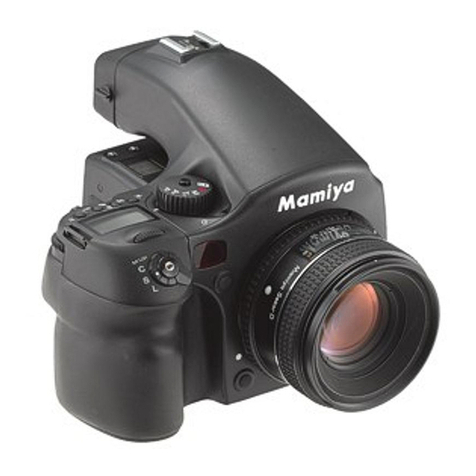
Mamiya
Mamiya 645 AFD III User manual
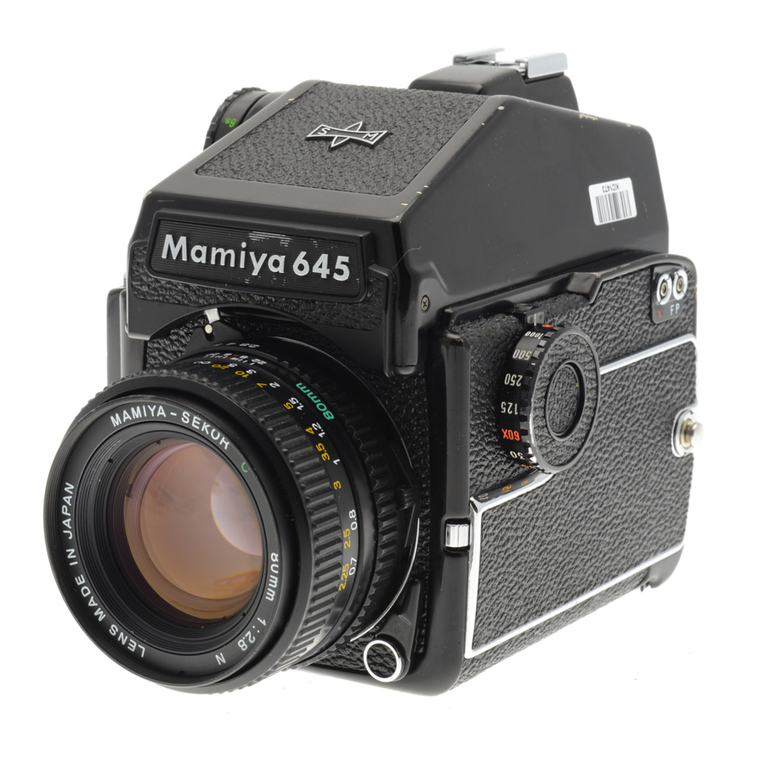
Mamiya
Mamiya M645 1000S User manual

Mamiya
Mamiya C330 User manual

